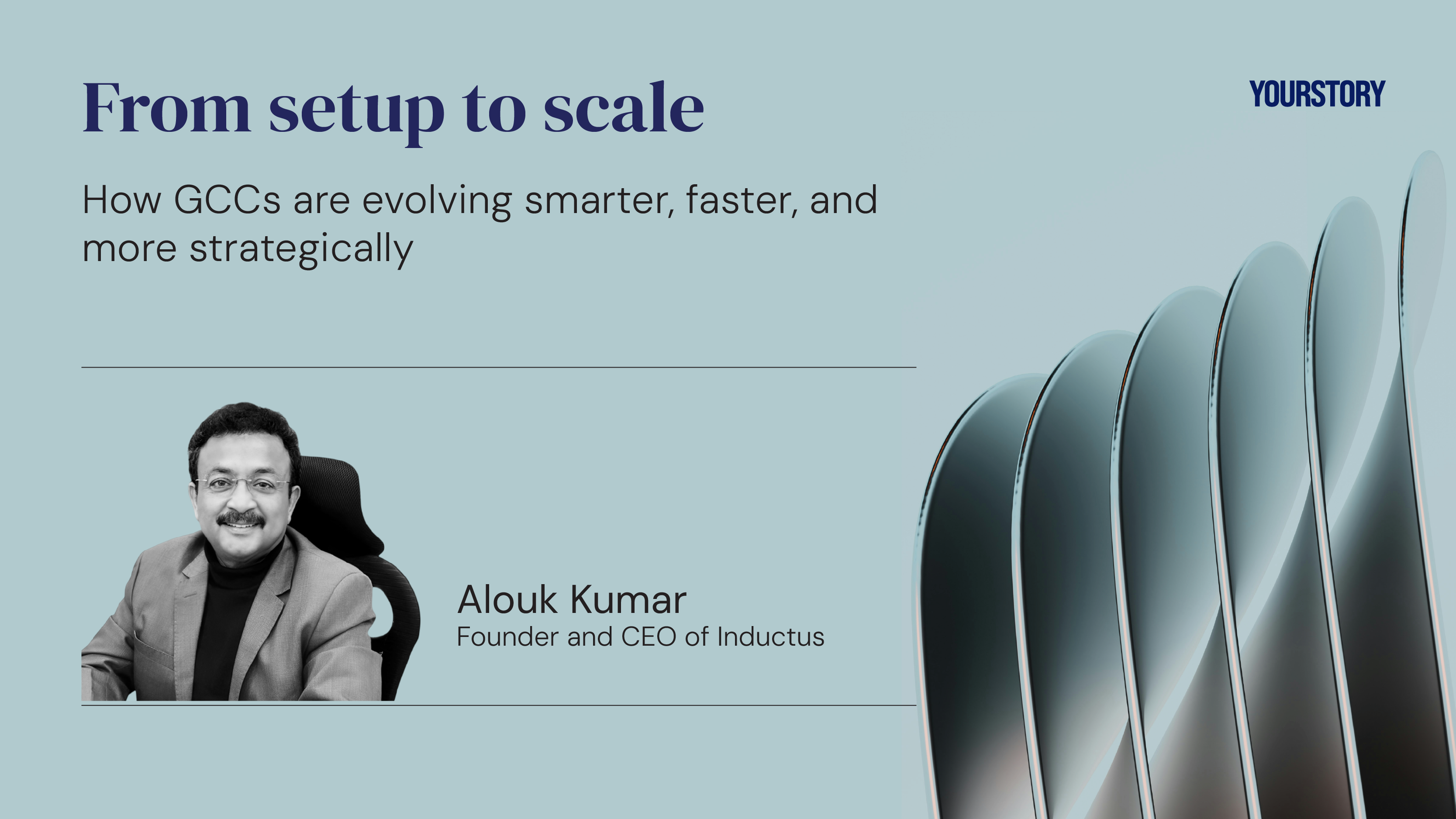By Surya Kannoth
Copyright yourstory

As India’s GCC landscape matures, the blueprint for success is no longer one-size-fits-all. From compressed timelines and new talent strategies to Tier II readiness and evolving workspace models, GCCs are navigating a more agile, distributed, and strategically complex environment.
In this exclusive conversation for YourStory’s latest report titled ‘Building Tomorrow’s GCCs’, Alouk Kumar, Founder and CEO of Inductus, shares his front-line view on how global firms are rethinking their GCC playbook, and what it really takes to move from idea to execution in record time
Edited excerpts of the interview:
What are the biggest shifts in GCC planning today compared to five years ago?
Alouk Kumar (AK): Five years ago, most GCCs were back-end support centers. Today, they’re full-fledged R&D hubs driving innovation and specialized skill development.
This evolution has been accelerated by India’s tech reputation, and now, even mid-sized f irms are setting up centers—a clear sign of “GCC 3.0”.
Cost still matters, but it’s no longer the only lever. India’s value proposition now centers on access to specialized talent. Additionally, US immigration constraints and a weakening global economy have made India even more critical for companies seeking agility and cost effectiveness.
What are the unique challenges and opportunities in Tier II and III cities?
AK: Talent acquisition is the biggest hurdle. While cloud and 5G have leveled the tech infrastructure, a portion of our workforce— typically the top 20%—still prefers metros due to lifestyle and exposure.
Professionals earning upwards of Rs 30 lakh per annum expect strong lifestyle infrastructure, which many Tier II cities still lack. But the tide is turning.
Government policies are improving, and construction tech is enabling faster infrastructure upgrades. We’re approaching an inflection point. Within the next 3–5 years, Tier II cities could become key to India’s R&D future.
Which emerging cities are top contenders for GCC setups?
AK: Hyderabad remains strong, with robust infrastructure and a thriving ecosystem. NCR, especially Noida and Greater Noida, offers excellent connectivity and a large talent pool.
Jaipur is gaining traction thanks to its strategic location and quality of life. Pune benefits from its proximity to Mumbai and strong tech base. In Gujarat, Gandhinagar and Ahmedabad stand out, especially with GIFT City offering unique regulatory advantages for financial services GCCs.
Are you seeing any trends in flexible workspace demand?
AK: Definitely. We’re seeing a shift toward “company-owned, partner-operated” models. This allows companies to retain control over data and processes while outsourcing day-to-day operations to local experts.
Since mid-2024, demand for these hybrid models has risen, especially as GCCs explore options beyond captive units. Shared infrastructure models will likely become more common, enabling companies to scale with flexibility and speed.
What’s the typical setup timeline from planning to going live?
AK: The industry average is about six months, but we’ve executed GCC rollouts in three to four months by running parallel tracks—building infrastructure and hiring simultaneously.
Our partnerships—with Brookfield, Tech Mahindra, Redington, and others—help fast-track delivery. The real bottleneck is talent acquisition, mainly due to 2–3 months’ notice periods. So we start hiring early, and by the time the facility is ready, the team is too.
How can companies attract top talent to Tier II cities?
AK: Three things: job security, purchasing power, and quality of life. Post-pandemic, professionals want stability. Clear communication about company health and growth path is critical.
Next, show how salaries stretch further in Tier II cities. Finally, emphasize softer benefits— shorter commutes, stronger community ties, better work-life balance. These resonate with talent looking for meaning and sustainability over big-city buzz.
What should GCCs focus on during their first 24 months?
AK: Start with a clearly defined service portfolio and capability roadmap. Talent acquisition should be your top priority— without it, you can’t scale.
Choose your location based on business needs and talent availability, not just cost. Implement a governance model early and link your metrics to enterprise outcomes.
Standardize processes, then move up the value chain, from transactional to strategic functions.
What infrastructure features are non-negotiable?
AK: I’d list three things.
Commute-friendly location: Accessibility impacts everything from hiring to productivity.
Logistics support: Seamless people and resource movement is key.
Tech readiness: Your facility must support high-end IT, cybersecurity, and scalability from day one.
These are the core enablers. Everything else, like cafés or design elements, is secondary.
Are client expectations changing?
AK: Absolutely. There’s far more emphasis now on talent management. Clients want assurance that you can not only attract but also retain high-quality talent. They’re also looking closely at your partnerships— with universities, bootcamps, and even state governments.
Another big shift is around government support. Clients now expect faster permissions, fewer roadblocks, and proactive state engagement. This is becoming a key decision factor.
What are the top three success factors for launching a GCC in India?
AK: Location, technology, and talent. Pick the right city—it shapes your ecosystem. Invest in digital infrastructure that supports your unique needs, and secure access to skilled talent early.
If you get these three right, everything else— process, compliance, growth—falls into place.
Any final advice for global companies evaluating India?
AK: Don’t wait. India’s growth curve is compressing—what took other countries 30 years, we’re doing in 10. By 2030, India’s GCC landscape will be larger, more mature, and far more globally integrated.
We also have the demographic advantage. While countries like Japan and Germany are grappling with aging populations, India is young, dynamic, and future-ready. For any global business looking to scale strategically, India isn’t just an option—it’s the answer
This article is excerpted from YourStory’s latest report, ‘Building Tomorrow’s GCCs’.
[Click here download the report]



